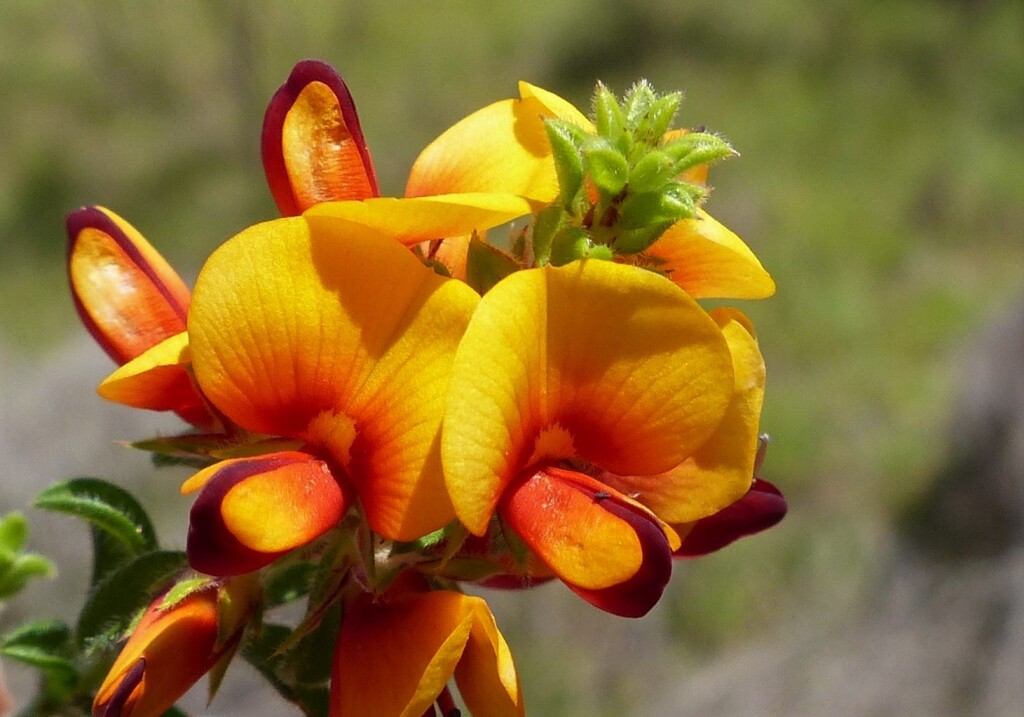Pultenaea procumbens
A.Cunn. Heathy Bush-peaSpreading, rarely erect shrub, to 1(–1.5) m high; stems terete with pale, erect or curled hairs when young. Leaves alternate, lanceolate, rhombic or occasionally linear, 4–10 mm long, 1–4 mm wide, strongly recurved, tapered to a long, pungent point; surfaces sparsely hairy with hairs denser at margin (broad-leafed forms usually with raised, palmate veins on lower surface); stipules lanceolate, 3–4 mm long, tapered to a long, slender, mucronate point; flowers solitary in axils, crowded toward tips of branches; bracts absent; stipules of floral leaves usually enlarged; calyx 7–8 mm long, tube sparsely hairy, upper lobes broad, oblique, narrowed abruptly, acute, lower lobes much narrower, deeply divided, tapered into long, acicular points, margins densely hairy; bracteoles attached near middle of calyx tube, 4–5 mm long, 3-lobed, divided to base, centre lobe leaf-like, hairy, outer lobes papery; standard 7–8 mm wide; ovary and style glabrous except for tuft of hairs at base of style. Pod ovate, enclosed by calyx. Flowers Oct.–Nov.
VVP, VRiv, CVU, NIS, EGU, HSF, HNF, VAlp. Also NSW, ACT. Scattered in northern and eastern areas (e.g. Pine Mountain, Bowen Range, Mitta Mitta, Mt Pilot, Mt Wellington area), usually in dry forest, often on rocky hillsides, including granite formations.
Near Beechworth, populations occur with leaves showing a transition towards the small, obtuse, non-pungent leaves of Pultenaea foliolosa, suggesting hybridization. Williamson based his description of P. styphelioides var. mutica on one of these plants.
Pultenaea procumbens as treated here is regarded as a species complex by Barrett et al. (2024), with the type occurring in NSW. It is likely that plants in Victoria will be recircumscribed in the future.
Corrick, M.G. (1996). Pultenaea. In: Walsh, N.G.; Entwisle, T.J., Flora of Victoria Vol. 3, Dicotyledons Winteraceae to Myrtaceae, pp. 765–793. Inkata Press, Melbourne.
 Spinning
Spinning
